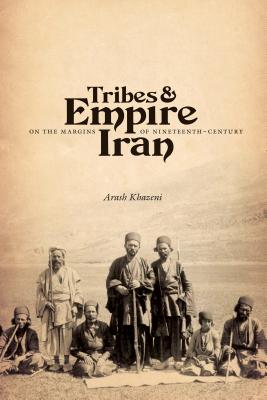

 University of Washington Press
University of Washington Press
Tribes & Empire on the Margins of Nineteenth-Century Iran


Key Metrics
- Arash Khazeni
- University of Washington Press
- Paperback
- 9780295989952
- 8.9 X 6 X 1 inches
- 1.1 pounds
- History > Middle East - General
- English
 Secure Transaction
Secure TransactionBook Description
Tribes and Empire on the Margins of Nineteenth-Century Iran traces the history of the Bakhtiyari tribal confederacy of the Zagros Mountains through momentous times that saw the opening of their territory to the outside world. As the Qajar dynasty sought to integrate the peoples on its margins into the state, the British Empire made commercial inroads into the once inaccessible mountains on the frontier between Iran and Iraq. The distance between the state and the tribes was narrowed through imperial projects that included the building of a road through the mountains, the gathering of geographical and ethnographic information, and the exploration for oil, which culminated during the Iranian Constitutional Revolution.
These modern projects assimilated autonomous pastoral nomadic tribes on the peripheries of Qajar Iran into a wider imperial territory and the world economy. Tribal subjects did not remain passive amidst these changes in environment and society, however, and projects of empire in the hinterlands of Iran were always mediated through encounters, accommodation, and engagement with the tribes. In contrast to the range of literature on the urban classes and political center in Qajar Iran, Arash Khazeni adopts a view from the Bakhtiyari tents on the periphery. Drawing upon Persian chronicles, tribal histories, and archival sources from London, Tehran, and Isfahan, this book opens new ground by approaching nineteenth-century Iran from its edge and placing the tribal periphery at the heart of a tale about empire and assimilation in the modern Middle East.
Author Bio
Arash Khazeni earned a Ph.D. in history from Yale University in 2006 and joined Pomona College in 2010 following fellowships at the Huntington Library and UCLA. His research is focused on the imperial and environmental histories of the modern Middle East, South Asia, and the Indian Ocean, including the monographs Tribes and Empire on the Margins of Nineteenth-Century Iran (University of Washington Press, 2010), recipient of the Middle East Studies Association Houshang Pourshariati Book Award, Sky Blue Stone:
The Turquoise Trade in World History (University of California Press, 2014), and The City and the Wilderness: Indo-Persian Encounters in Southeast Asia (University of California Press, 2020).
Trained as a historian of the Islamic Middle East, primarily Iran and Afghanistan, during the sixteenth through nineteenth centuries, Khazeni’s research veers to the margins and the places in between empires, world regions, and nations. This emphasis on the margins and borderland spaces began in a Marxist vein, as a context for exploring the histories of societies “from below” in the path of E.P. Thompson, and a way of retracing the pasts of “people without history.”
This method has also found kinship in aspects of the field of environmental history and become associated with certain forms of interconnected global history, in particular a wave of new studies of the Indo-Persian world and inter-Asian contacts and exchanges.
At Pomona College, Khazeni teaches courses on the Middle East, South Asia, and the Indian Ocean in the Department of History and serves as the coordinator of Middle Eastern Studies.
Source: Pomona College - Department of History
Videos


Community reviews
Write a ReviewNo Community reviews